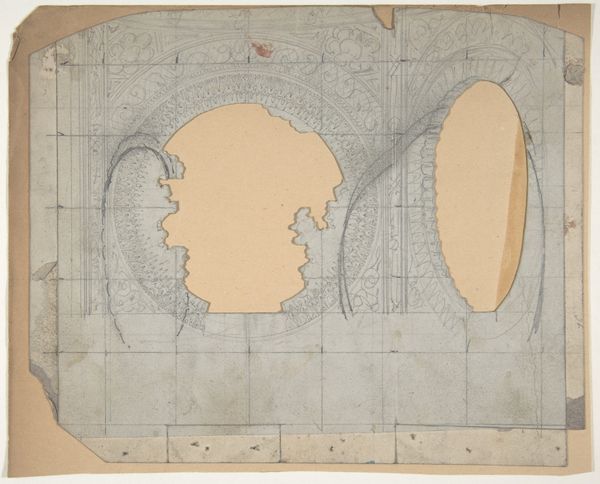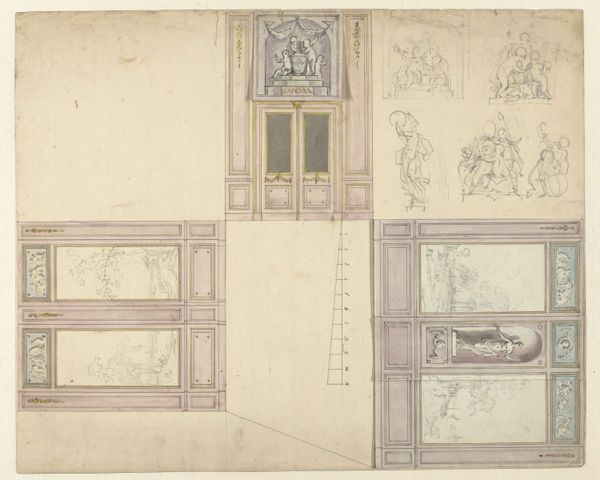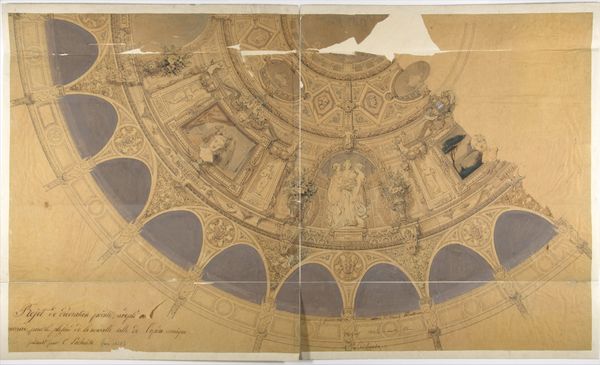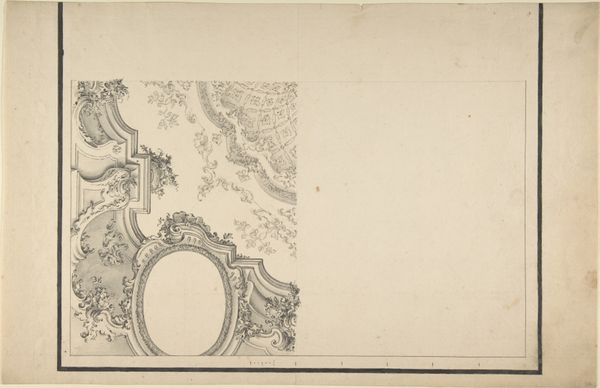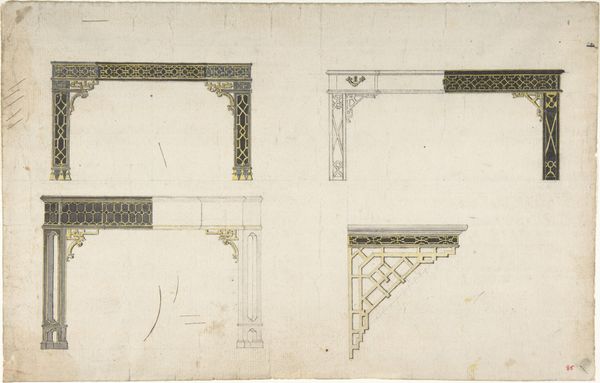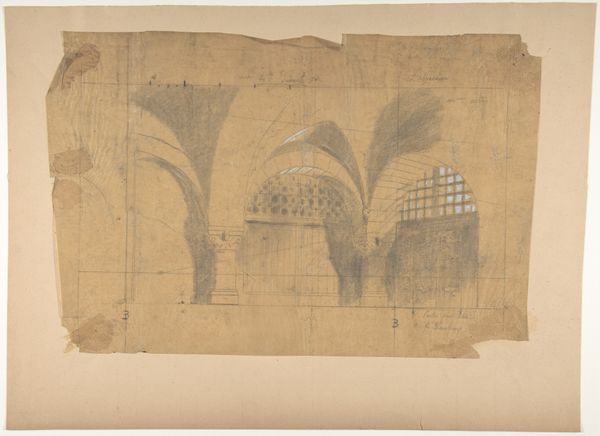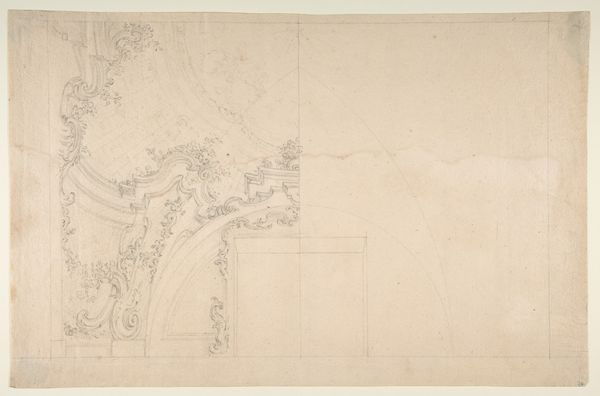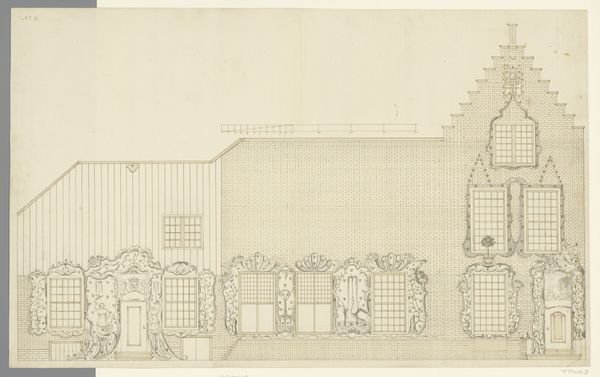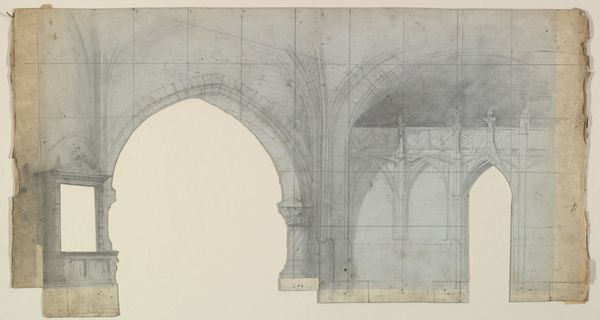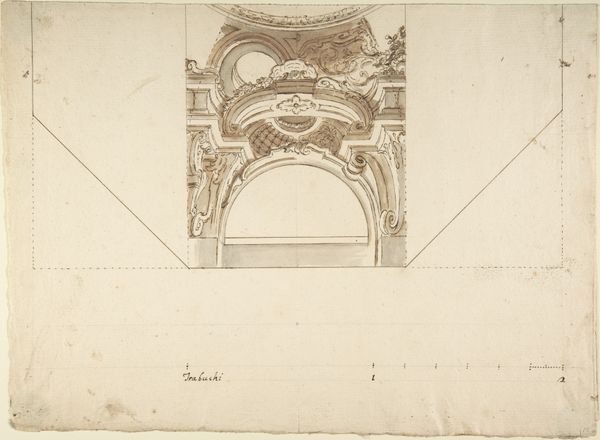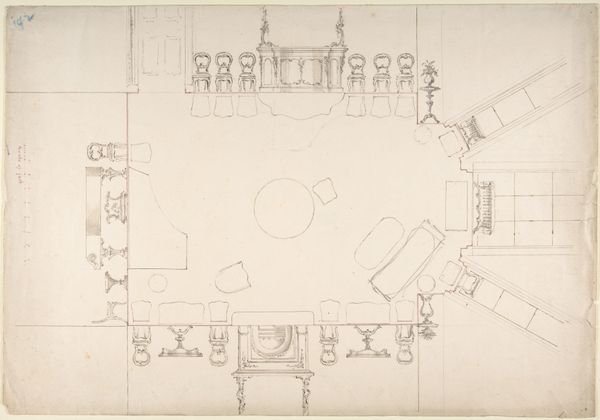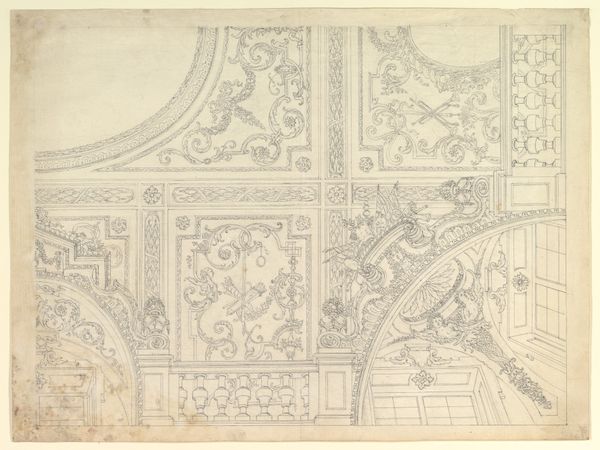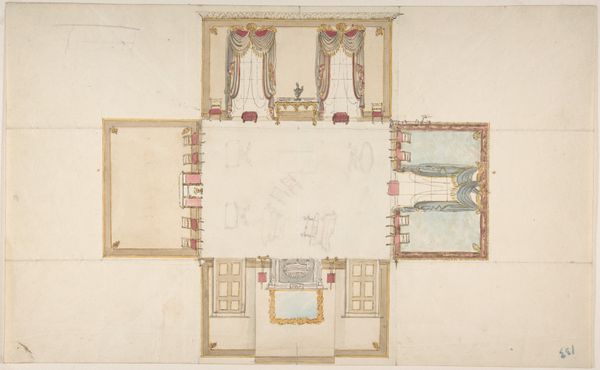
Design for a Stage Set at the Opéra, Paris 1830 - 1890
0:00
0:00
drawing, coloured-pencil, print
#
drawing
#
neoclacissism
#
coloured-pencil
# print
#
landscape
#
coloured pencil
#
cityscape
Dimensions: Irregular sheet: 8 1/4 x 11 13/16 in. (20.9 x 30 cm)
Copyright: Public Domain
Curator: Eugène Cicéri’s “Design for a Stage Set at the Opéra, Paris,” created sometime between 1830 and 1890. It's currently held at the Metropolitan Museum of Art. Editor: Whoa, check out this colossal architectural sketch. Makes you want to leap into a Parisian fantasy! All that intricate pencil work hints at epic productions… totally grand-scale romantic opera vibes, right? Curator: Absolutely. The drawing utilizes colored pencil and print media to illustrate a Neoclassical design. What's crucial to understanding this piece is recognizing the Opéra's role not just as a place for artistic performance, but as a symbol of power, prestige, and often, political agendas. These stage sets were carefully crafted to uphold specific narratives, aligning the viewing experience with broader social values and political aims. Editor: You nailed it. It does feel propagandistic now that you point that out—though “escapist” is maybe what the designer intended. I could get happily lost looking at that delicate rendering. Does make you wonder about the backstage grit and drama that wouldn't be as ideal. The artist’s style, I think, captures the mood of 19th-century urban fantasy. Curator: Yes, and in thinking through the social lens, the actual opera experiences were also profoundly stratified, impacting viewing based on social standing. And the city backdrop itself. Look how Cicéri emphasizes the monumental aspects. Cityscapes are rarely politically neutral backdrops. Editor: Never! And back then? You could use your fancy binoculars to check out who was in which box—that would be half the fun! It seems less "design" and more "slice of life", in that respect. Curator: Exactly, it gives so much context for class, for seeing, and for what the urban experience entailed. This cityscape embodies the ideals and performances of social power, too. Editor: Seeing that design really sparks my curiosity. To think what's hidden inside those great spaces, where culture and social rules collide! It almost feels like uncovering a buried history. Curator: Precisely. It forces us to confront these hidden stories, to decode how cultural narratives shape not only our art but our social understanding.
Comments
No comments
Be the first to comment and join the conversation on the ultimate creative platform.
